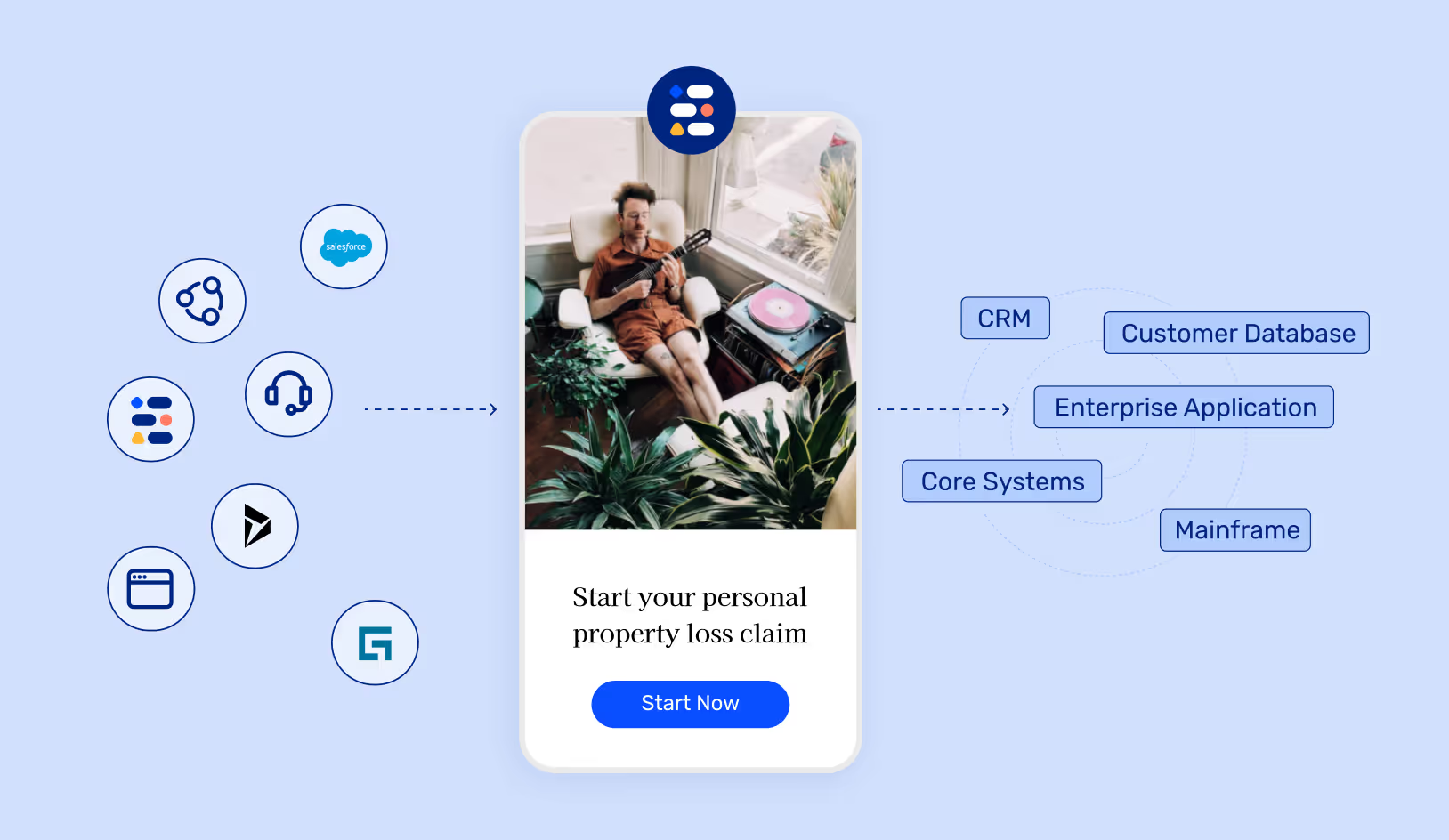In today’s fast-paced digital world, customers expect smooth and connected experiences every time they interact with a business. Whether they're applying for a loan, buying insurance, or signing up for a new service, customers want the process to be effortless—yet, too often, they encounter fragmented experiences. Different departments, systems, and channels that don’t talk to each other lead to confusion, delays, and frustration.
These disconnected touchpoints result in fragmented customer journeys, where customers are forced to repeat information, experience inconsistent service, or face avoidable delays. For businesses, these issues mean lower customer satisfaction, lost opportunities, and operational inefficiencies. So, how can companies overcome these challenges and deliver seamless digital experiences?
The solution lies in embracing a low-code digital platform with a powerful integration layer that unifies systems, automates workflows, and personalizes interactions in real-time. In this blog, we’ll dive into how this dynamic layer helps overcome fragmented customer journeys and builds the foundation for seamless digital experiences.
The challenges of fragmented customer journeys
Fragmented journeys can occur for many reasons—disconnected data systems, lack of communication between departments, or inconsistent experiences across digital and physical touchpoints. Some of the most common challenges include:
1. Disconnected systems and data silos
Businesses often use a variety of systems to manage customer interactions, including CRM, ERP, and support software. These systems are not always well-integrated, which leads to a fragmented view of the customer journey. Without a unified data flow, it’s difficult to maintain a consistent understanding of customer needs and history.
2. Inconsistent experiences across channels
As customers engage through different channels—whether a website, app, or in-person—there’s often a breakdown in consistency. Without cross-channel integration, a customer’s interaction in one channel (such as submitting a request online) may not carry over to another (such as calling support), forcing them to repeat information and making the process unnecessarily frustrating.
3. Manual, time-consuming processes
Fragmented customer journeys are often riddled with manual processes—such as data entry, document handling, and approvals—that slow everything down. These inefficiencies increase the time required to complete tasks, add costs, and create opportunities for errors.

4. Lack of personalization
Customers expect tailored experiences based on their needs and past interactions. However, fragmented systems can’t provide this level of personalization because they lack a comprehensive view of the customer. As a result, customers receive generic, often irrelevant, communication that fails to meet their expectations.
The impact of fragmented journeys on businesses
Fragmented customer journeys not only frustrate customers but also negatively impact business performance in several ways:
- Decreased Customer Satisfaction: Customers expect smooth, connected experiences. If they encounter unnecessary obstacles, they are more likely to abandon the process or switch to a competitor.
- Lost Revenue Opportunities: Without a unified customer view, businesses miss opportunities to upsell, cross-sell, or provide timely, personalized offers.
- Higher Operational Costs: Manual processes and inefficiencies tied to disconnected systems drain resources and reduce operational effectiveness.
- Brand Damage: Consistency builds trust, and when customers experience fragmented, inconsistent service, it erodes brand loyalty.
The solution: embracing a digital platform
The key to solving these challenges is adopting a low-code digital platform that acts as a bridge between existing systems, unifying data and workflows to ensure seamless interactions across every channel. Here’s how it transforms fragmented journeys into cohesive, efficient digital experiences:
1. Unifying data across systems
Serves as an integration hub that connects your core systems—CRM, ERP, support, and more—creating a centralized source of truth for customer data. By eliminating silos, digital platform ensures that all customer information flows seamlessly across departments and touchpoints, allowing for a consistent and complete understanding of customer needs.
2. Automating workflows for speed and efficiency
Manual processes often slow down customer interactions, leading to frustration and inefficiency. With a Dynamic Customer Interaction Layer, businesses can automate key workflows—from document generation to approval routing and customer follow-ups. This automation not only speeds up processes but also minimizes the risk of errors, ensuring smoother customer journeys.
3. Personalizing customer interactions in real-time
Personalization is key to delivering a great customer experience. A digital platform allows businesses to capture customer data in real time and dynamically adjust interactions based on that input. For example, if a customer is filling out an online form, the system can tailor the next steps based on their responses, creating a more personalized and relevant journey.
4. Ensuring seamless omnichannel experiences
Today’s customers switch between devices and channels without thinking twice. They may start a process on a mobile app and finish it on a desktop, or begin a query in a chatbot and resolve it through a phone call. A digital platform ensures that the customer journey is consistent and uninterrupted across all channels, so customers can move seamlessly from one touchpoint to another without losing context or having to start over.
5. Enhancing security and compliance
For industries like insurance, financial services, and healthcare, ensuring security and compliance is paramount. A Dynamic Customer Interaction Layer can integrate built-in security features, such as encryption, access controls, and compliance with regulations like GDPR, HIPAA, and ISO standards. This ensures that every customer interaction is not only seamless but also secure and compliant with industry regulations.
Digital platform with a dynamic customer interaction layer
Fragmented customer journeys are a common pain point for businesses, but they don’t have to be. By adopting a Dynamic Customer Interaction Layer, businesses can overcome these challenges and create seamless, personalized, and efficient digital experiences that meet modern customer expectations. By unifying data, automating workflows, and providing consistent cross-channel support, this layer transforms how businesses interact with customers, improving satisfaction, loyalty, and operational performance.
In a world where customer experience is a key differentiator, embracing a dynamic, integrated approach is essential. Digital platforms empower businesses to connect the dots across the entire customer journey, delivering the seamless digital experiences customers crave.





